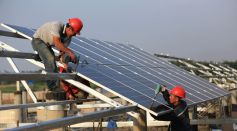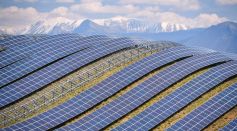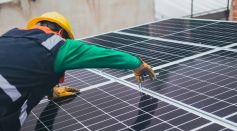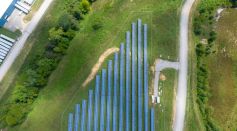Tags: Solar Power

Solar-Powered Atmospheric Water Harvesting Offers Hope for Dryland Regions

US Coal Usage Wanes as Wind and Solar Power Take Over, Falling by 3 Terawatt-Hours in First Five Months of 2023

Solar Panel Breakthrough: Stanford University Creates Panels That Generate Electricity 24/7 Revolutionizing Power Generation

Solar-powered Waste-to-Fuel System Converts Plastic and Greenhouse Gases Into Sustainable Products

Ultrathin Ribbons Can Now Help Produce Solar Power Energy!

European Space Agency Eyes Making "Expensive" Solaris Space-Based Solar Power

12-Month Test of Energy Generator Using Artificial Blowhole Formation Exceeds Expectations in Tasmania

Novel Synthetic Fuel Created by Swiss Scientists Aims to Revolutionize Carbon Footprint of Air Travel

First Perovskite Solar Cell That Could Last 30 Years Marks Major Milestone for Emerging Class of Renewable Energy Technology

China Wants to Make First-Ever 10-Megawatt Solar Power Plant in Space That Will Send Solar Energy to Earth

Reverse Solar Panel Generates Electricity Without Sunlight by Emitting Heat to Cold Night Skies

Space-Based Solar Power Plant: UK Plans to Beam Energy From Space to Reach Goal of Zero Greenhouse Gas Emissions by 2035

Solar Power More Preferred Than Nuclear Technology on Mars, But Here's The Catch!

Solar-Powered Tesla Will Go On a 9,400-Mile Trip Around Australia for the First Time

Long-Term Solar Energy Saving Now Possible, Storage Up to 18 Years

Space-Based Solar Power Station Projects at Work; Benefits and Functions Explained

Solar Panel Recycling Problems May Be Finally Solved, Here's How

Biochemistry Researchers Identified How Organic Solar Cells Could Be More Efficient

NASA Spacecraft to Investigate Metal-Rich Asteroid Psyche By Launching Futuristic Electric Thrusters Emitting Cool Blue Glow

Solar Power May Be Used in 40 Percent of the United States by 2035 Solving 'Code Red' Climate Change
Most Popular

Ancient Hotspot Found to Have Created Great Lakes 300 Million Years Ago

Mysterious Structures Discovered Beneath the Pacific Ocean, Puzzle Scientists

Health Benefits of Drinking Hot Chocolate

Largest Known Volcanic Aquifer Discovered Beneath Oregon's Cascades





